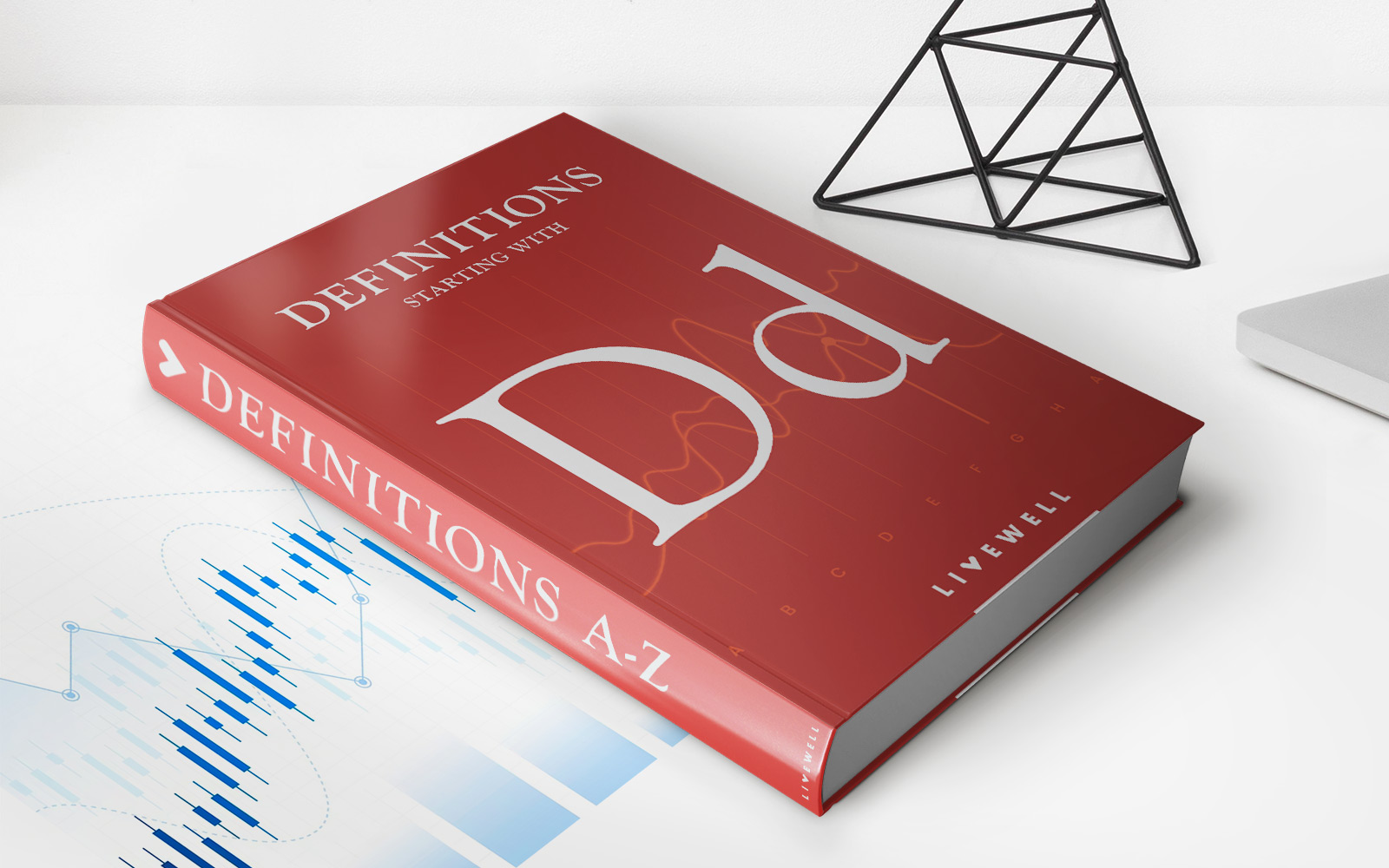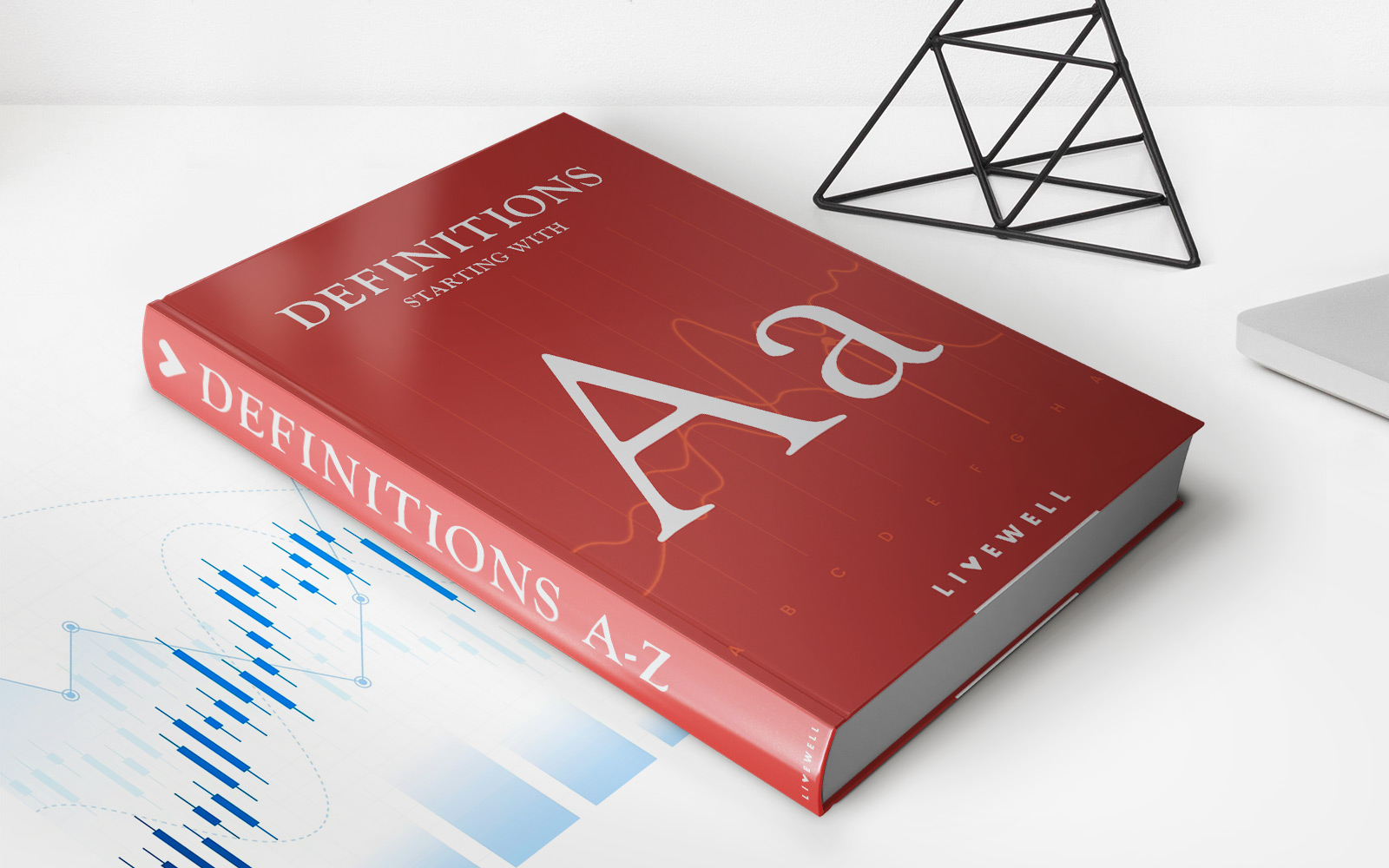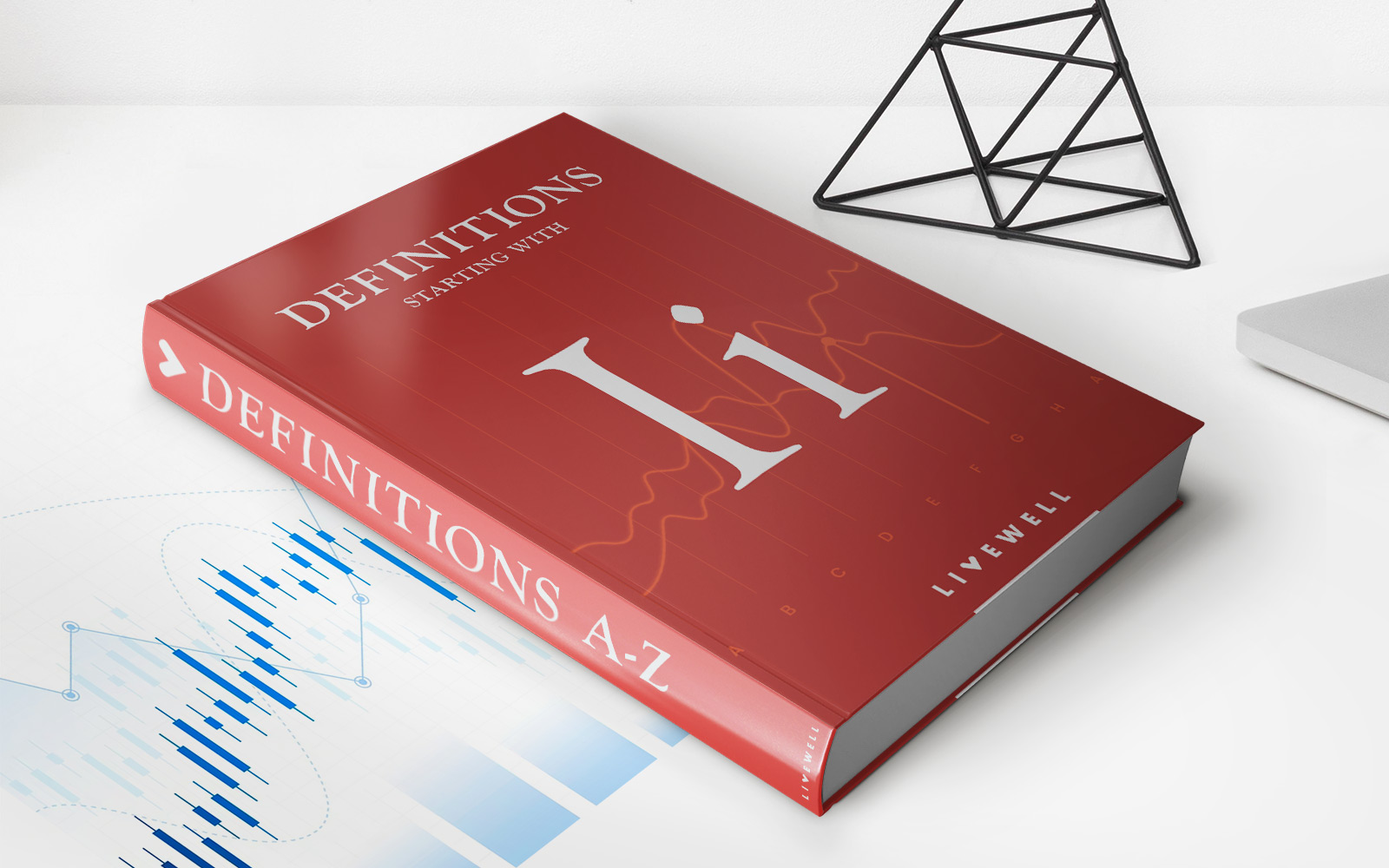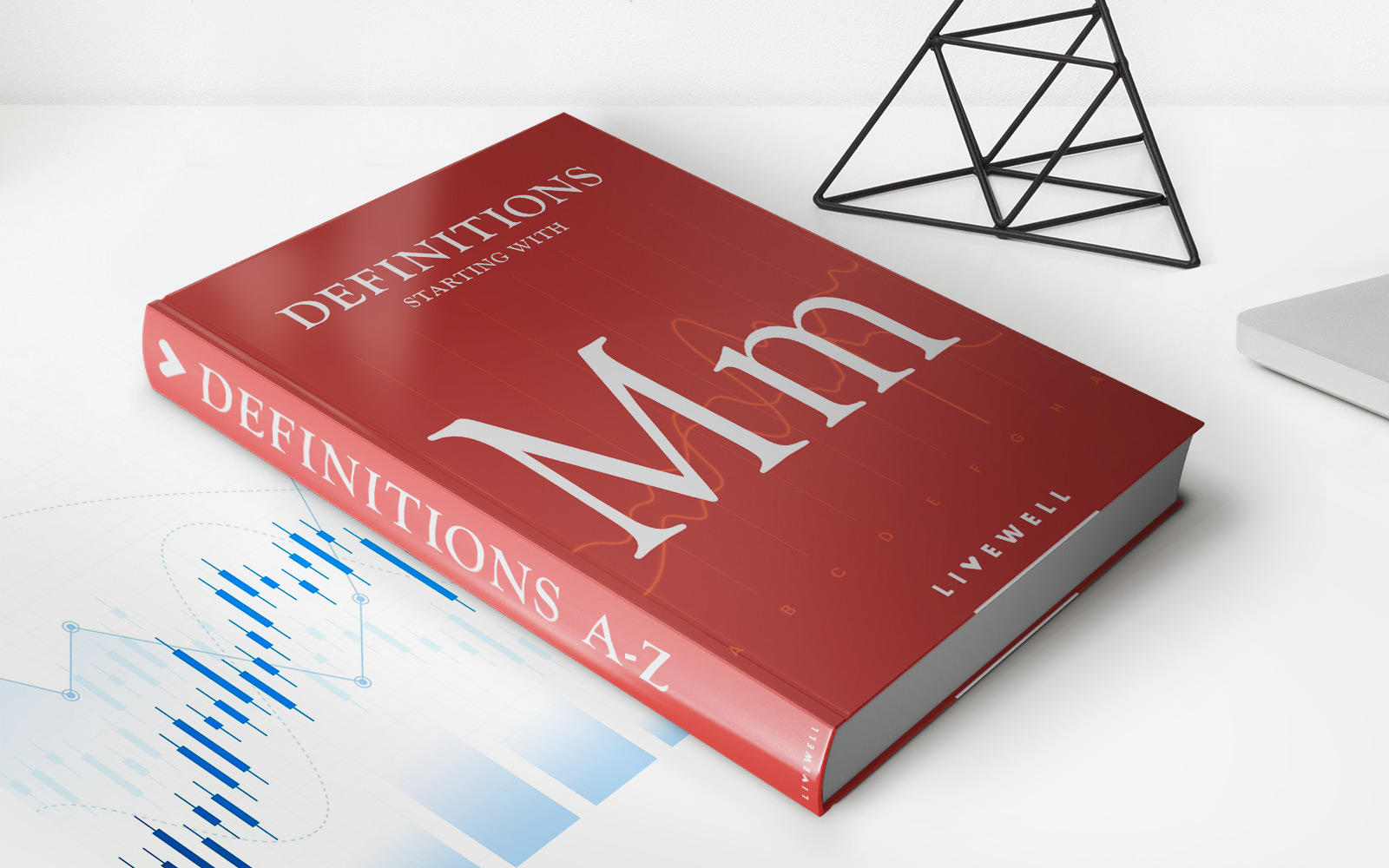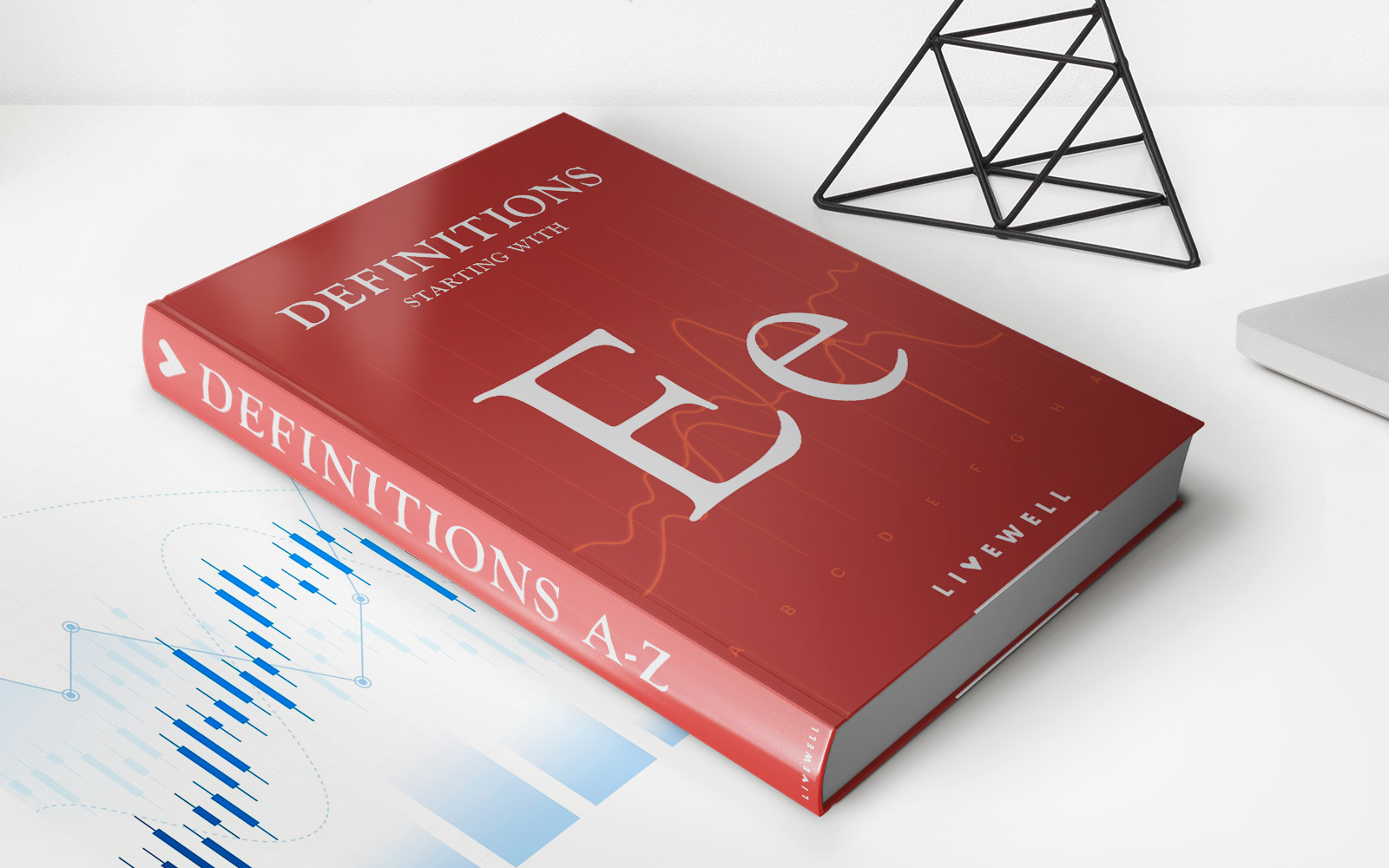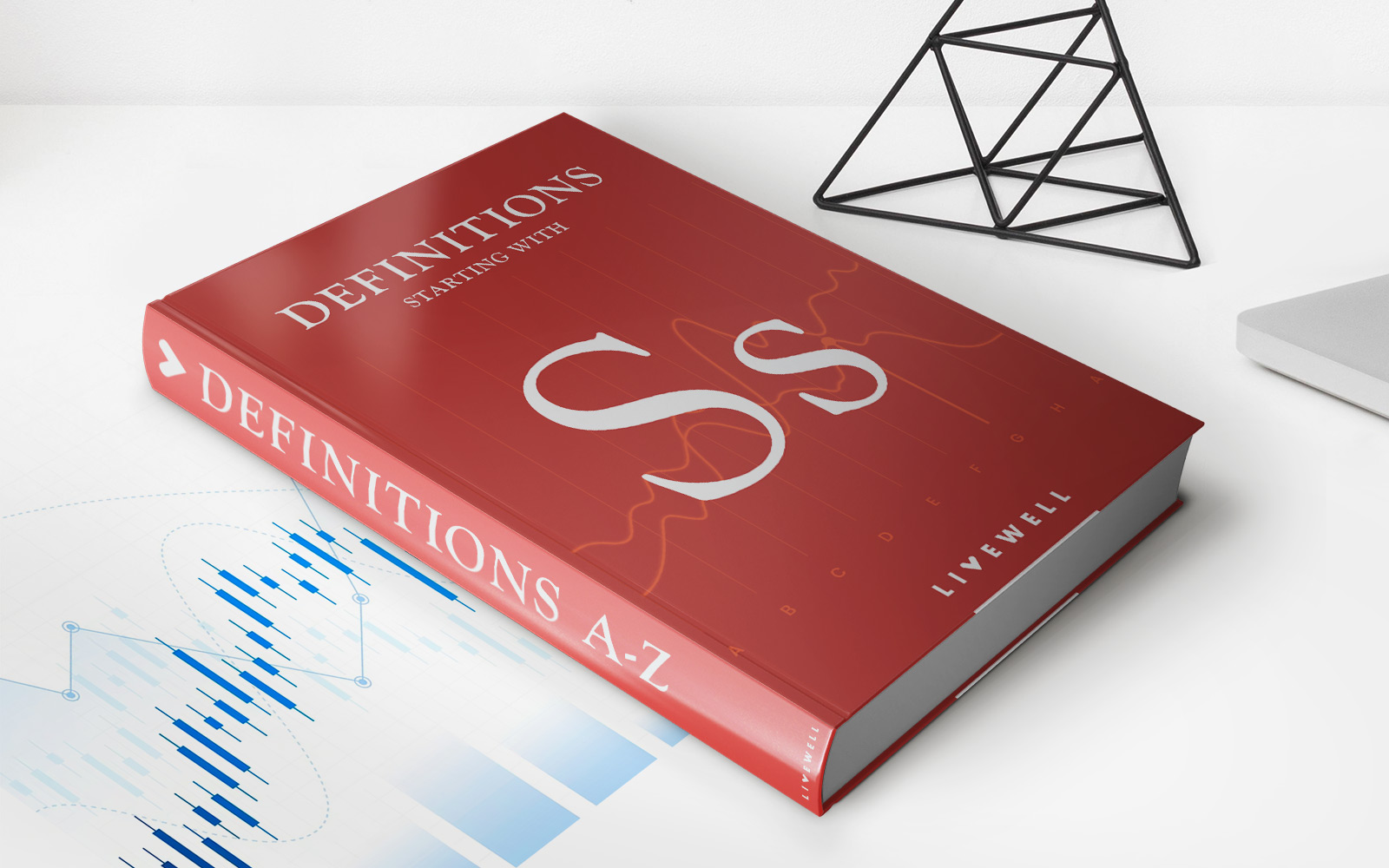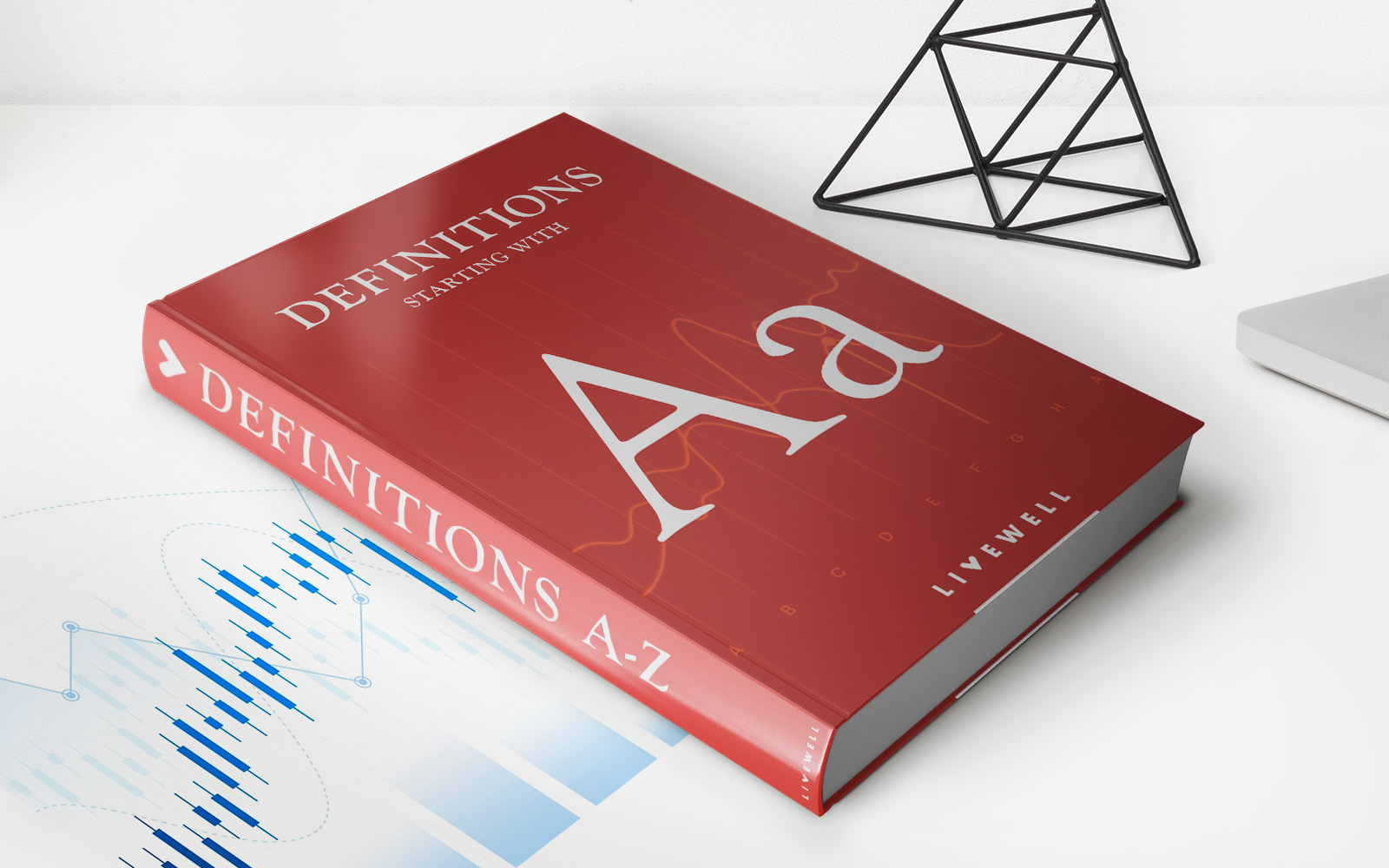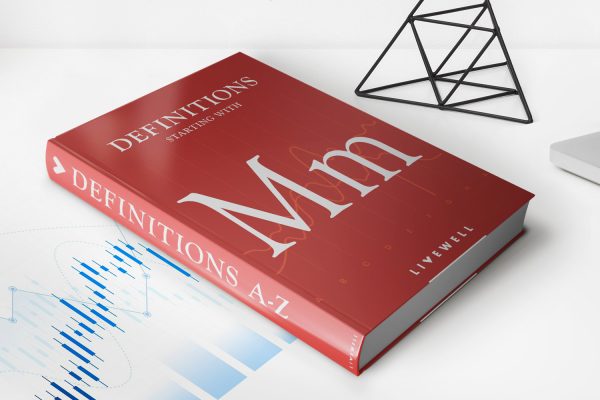

Finance
What Is An Exclusion In Insurance?
Published: November 16, 2023
Learn what an exclusion in insurance means and how it impacts your financial security. Understand the role of exclusions in your insurance policy.
(Many of the links in this article redirect to a specific reviewed product. Your purchase of these products through affiliate links helps to generate commission for LiveWell, at no extra cost. Learn more)
Table of Contents
Introduction
When it comes to insurance, it’s important to understand every aspect of your policy to ensure you have the coverage you need. One crucial element to consider is the concept of exclusions. Insurance policies often contain exclusions, which are specific situations or risks that are not covered by the policy. These exclusions can have a significant impact on your coverage and can affect your ability to make a claim.
Exclusions are put in place by insurance companies to limit their liability and manage risk. They help insurers define the scope of coverage and protect against potential losses that they deem too risky to cover. By specifying the situations or risks that are excluded, insurance companies are able to provide coverage at a more affordable price.
Understanding exclusions in insurance policies is essential to avoid any unexpected surprises when filing a claim. By knowing what is not covered, you can better assess your risks and consider additional coverage options if needed.
In this article, we will delve deeper into the concept of exclusions in insurance. We will explore the definition of exclusions, different types of exclusions, common exclusions found in insurance policies, the importance of understanding exclusions, the impact of exclusions on insurance claims, and how to review an insurance policy for exclusions.
By gaining a comprehensive understanding of exclusions in insurance, you can make informed decisions about your coverage and ensure you have the necessary protection when you need it most.
Definition of Exclusion in Insurance
In the context of insurance, an exclusion refers to specific situations, risks, or conditions that are intentionally not covered by an insurance policy. Exclusions are explicitly stated in the policy contract and are designed to limit the insurer’s liability and manage risk effectively. They define the boundaries of coverage and identify circumstances in which the insurer will not be responsible for providing compensation or benefits.
Insurance policies typically contain detailed language outlining these exclusions to ensure clarity and transparency for the policyholder. It is crucial to carefully review the policy’s exclusions to understand the potential gaps in coverage and assess any additional risk exposures that may need to be addressed.
Exclusions can vary significantly depending on the type of insurance policy and the individual insurer’s guidelines. For example, a health insurance policy may exclude coverage for pre-existing conditions, experimental treatments, or injuries resulting from certain high-risk activities. An auto insurance policy may exclude coverage for damage caused by intentional acts or driving under the influence.
Exclusions can also be categorized into two main types: named exclusions and general exclusions. Named exclusions specify specific situations or risks that are explicitly excluded from coverage. General exclusions, on the other hand, encompass a broader range of situations or risks that are automatically excluded unless stated otherwise.
It is important to note that exclusions are not meant to be hidden or misleading; they are integral components of insurance policies. By clearly defining what is not covered, insurers can provide more affordable premiums and focus on covering the most common and significant risks associated with the policyholder’s situation. However, it is the policyholder’s responsibility to carefully review and understand the exclusions before purchasing an insurance policy.
While exclusions may seem restrictive, they are essential for maintaining the integrity of insurance contracts and ensuring the financial sustainability of insurance companies. By carefully considering the exclusions and understanding the limitations of a policy, policyholders can make informed decisions about their coverage needs and seek additional coverage if necessary.
Types of Exclusions
Insurance policies can have various types of exclusions, each intended to limit coverage in specific circumstances. Understanding the different types of exclusions can help policyholders better analyze their coverage and identify potential risks that may not be covered. Here are some common types of exclusions found in insurance policies:
- Named Perils Exclusions: Under this type of exclusion, specific perils or events are listed that the insurance policy does not cover. For example, a homeowner’s insurance policy may have exclusions for earthquakes, floods, or acts of war.
- Intentional Act Exclusions: Insurance policies often exclude coverage for any damages or injuries that occur as a result of intentional acts. This includes situations where policyholders intentionally cause harm or damage to themselves or others.
- Business Activities Exclusions: Many personal insurance policies, such as homeowner’s or personal auto insurance, have exclusions for business-related activities. This means that if an incident occurs while engaging in business activities, the policy may not provide coverage.
- Wear and Tear Exclusions: Insurance policies, especially those covering property or vehicles, often exclude coverage for damages caused by normal wear and tear or gradual deterioration over time.
- Pre-existing Conditions Exclusions: Health insurance policies frequently have exclusions for pre-existing medical conditions, which are health conditions that the policyholder had before obtaining the insurance. These exclusions may apply for a specific period of time, known as the waiting period.
- Professional Liability Exclusions: Insurance policies for professionals, such as doctors or lawyers, may have exclusions for claims arising from professional errors, negligence, or malpractice.
- War and Terrorism Exclusions: Many insurance policies exclude coverage for damages or losses caused by war, acts of terrorism, or civil unrest.
These are just a few examples of the types of exclusions that can be found in insurance policies. It is important to carefully review your policy documents or consult with your insurance agent to understand the specific exclusions applicable to your coverage.
Remember that exclusions are put in place by insurance companies to manage risks and keep premiums affordable. Policyholders should consider their specific needs and assess whether additional coverage options are necessary to fill any gaps in coverage identified through the exclusions.
Common Exclusions in Insurance Policies
Insurance policies often contain a wide range of exclusions that can vary depending on the type of coverage and the specific insurer. While the exclusions in each policy will differ, there are some common exclusions that are frequently found across insurance policies. Understanding these common exclusions can help policyholders be aware of potential risks and limitations in their coverage. Here are some examples of common exclusions in insurance policies:
- Acts of God: Many insurance policies exclude coverage for natural disasters such as earthquakes, hurricanes, and floods. These events are often considered unpredictable and beyond human control.
- Intentional acts: Insurance policies typically exclude coverage for damages or injuries that occur due to intentional acts, such as arson or fraud.
- Illegal activities: Any damages or losses resulting from illegal activities, including illegal drug use or participation in criminal acts, are commonly excluded from coverage.
- War and terrorism: Insurance policies often exclude coverage for damages or losses caused by acts of war, terrorism, or civil unrest.
- Normal wear and tear: Policies covering property or vehicles usually exclude coverage for damages caused by normal wear and tear, as these are considered predictable and expected over time.
- Business-related activities: Personal insurance policies may exclude coverage for incidents that occur while engaging in business-related activities. This includes operating a home-based business or using a personal vehicle for business purposes.
- Pre-existing conditions: Health insurance policies often have exclusions for pre-existing medical conditions, which are health conditions the policyholder had before obtaining the insurance.
- High-risk activities: Insurance policies may exclude coverage for injuries or damages that occur while engaging in high-risk activities such as extreme sports or bungee jumping.
It is important to note that this is not an exhaustive list of exclusions, and the specific exclusions in your insurance policy may differ. It is crucial to carefully review your policy documents or consult with your insurance agent to understand the specific exclusions that apply to your coverage.
Understanding the common exclusions in insurance policies can help policyholders make informed decisions regarding their coverage and take appropriate steps to mitigate any gaps in protection. If certain exclusions leave you exposed to risks that are essential to your needs, you may consider purchasing additional coverage or seeking alternative insurance options.
Exclusions vs. Limitations
When reviewing an insurance policy, it’s common to come across terms like “exclusions” and “limitations.” While both terms refer to restrictions within the policy, they have distinct meanings and implications. Understanding the difference between exclusions and limitations is vital to fully grasp the extent of your insurance coverage.
Exclusions: Exclusions in an insurance policy explicitly state the situations, risks, or conditions that are not covered by the policy. These exclusions define the boundaries of coverage and specify instances in which the insurance company will not provide compensation or benefits. Examples of exclusions can include natural disasters, intentional acts, or pre-existing conditions. The purpose of exclusions is to limit the insurer’s liability and manage risk effectively. It’s important to carefully review the exclusions in your policy to understand any potential gaps in coverage.
Limitations: Limitations, on the other hand, refer to restrictions on the amount or duration of coverage provided by an insurance policy. Unlike exclusions, limitations do not outright exclude certain risks or situations from coverage; instead, they place conditions or restrictions on the benefits that can be claimed. For instance, a health insurance policy may have a limitation on the maximum amount that can be reimbursed for a specific medical procedure or a limitation on the number of visits covered for certain types of treatments. Limitations help insurance companies manage costs and prevent excessive payouts. It’s crucial to be aware of the limitations in your policy to prevent any unexpected financial burdens.
It is essential to carefully read and understand both the exclusions and limitations within your insurance policy. While exclusions identify what is not covered, limitations define the extent or conditions of coverage. Failure to comprehend these terms may result in denied claims or unexpected expenses.
Insurance policies are contractual documents, and both the policyholder and the insurer have rights and obligations outlined within. By being aware of the exclusions and limitations, you can make informed decisions about your coverage, assess potential risks, and consider additional coverage options if necessary.
If you have questions or concerns about the exclusions or limitations in your policy, it’s recommended to reach out to your insurance agent or provider for clarification. They can provide you with the necessary information and help you navigate the terms of your insurance coverage.
Importance of Understanding Exclusions in Insurance
As a policyholder, it is crucial to have a clear understanding of the exclusions in your insurance policy. Failing to grasp these exclusions can leave you vulnerable to unexpected financial burdens and denied claims. Here are several reasons why understanding exclusions is vital:
- Risk Assessment: By understanding the exclusions in your insurance policy, you can accurately assess the risks you may face. Knowing what is not covered enables you to take appropriate precautions and consider additional coverage options to mitigate potential gaps in protection.
- Informed Decision-Making: Having a comprehensive understanding of the exclusions empowers you to make informed decisions about your insurance coverage. You can evaluate the limitations of your policy and determine if additional coverage or policy endorsements are necessary to adequately protect your assets.
- Budgeting and Financial Planning: Understanding exclusions helps with budgeting and financial planning. You can anticipate potential costs that may fall outside your coverage and allocate funds accordingly. This can prevent financial surprises and setbacks in the event of a claim.
- Policy Adjustments: When you understand the exclusions in your insurance policy, you are better equipped to make adjustments when necessary. If you have unique circumstances or risks that are excluded from your current policy, you can work with your insurance agent to seek specialized coverage or endorsements that address those exclusions.
- Proper Claims Management: When filing an insurance claim, it is essential to be aware of the exclusions that may affect your eligibility for coverage. Understanding these exclusions allows you to provide accurate information when reporting the claim, ensuring efficient claims processing and avoiding potential disputes with the insurance company.
- Transparency and Peace of Mind: Understanding the exclusions in your insurance policy promotes transparency, giving you peace of mind knowing exactly what is covered and what is not. It eliminates uncertainties and allows you to manage your expectations regarding the benefits and protections provided by your insurance policy.
Insurance policies are legally binding contracts, and it is the policyholder’s responsibility to review and understand the exclusions. If there are any terms or language that you find unclear or confusing, it’s important to ask for clarification from your insurance agent or provider.
Remember that insurance is designed to protect against specific risks, and exclusions help insurance companies manage those risks and keep premiums affordable. By understanding the exclusions in your policy, you can ensure that you have the necessary coverage to protect you and your assets in the face of unforeseen events.
Impact of Exclusions on Insurance Claims
The exclusions outlined in an insurance policy can have a significant impact on insurance claims. Understanding these exclusions is crucial to avoid potential claim denials or unexpected out-of-pocket expenses. Here are some ways in which exclusions can affect insurance claims:
- Claim Denial: If a claim falls within an exclusion listed in the policy, the insurance company has the right to deny coverage. For example, if a homeowner’s insurance policy excludes coverage for flood damage and a claim is filed due to flood-related losses, the insurer may decline to provide compensation for those damages.
- Partial Coverage: In some cases, an exclusion may limit the coverage provided for a specific situation. For instance, an auto insurance policy may have an exclusion for racing activities. If an accident occurs while participating in a race, the policy may provide limited or no coverage, leaving the policyholder responsible for a portion of the damages.
- Out-of-Pocket Expenses: When a claim is denied due to an exclusion, the policyholder may be responsible for paying the costs associated with the claim out of pocket. This can lead to unexpected financial burdens that were not anticipated when the insurance policy was purchased.
- Disputes and Appeals: Exclusions can sometimes lead to disputes between the policyholder and the insurance company. If the policyholder believes that a claim should be covered despite the exclusion, they can go through the appeals process to provide evidence or arguments to support their case.
- Policy Limitations: Exclusions may also impact the overall policy limits. If certain risks or situations are excluded, it can reduce the potential coverage available under the policy, leaving the policyholder with less protection than expected.
It is important to carefully review the exclusions in your insurance policy before purchasing coverage and when filing a claim. By understanding the exclusions, you can anticipate potential gaps in coverage and plan accordingly. If you believe that an exclusion unfairly affects your claim or limits your coverage, it may be beneficial to consult with an insurance professional or seek legal advice to explore your options.
Keep in mind that insurance companies utilize exclusions to manage risk and offer coverage at affordable rates. While exclusions can have an impact on claims, they are essential for the sustainability of the insurance industry. As a policyholder, it is your responsibility to read and comprehend the policy terms to ensure you have the necessary coverage for your specific needs.
How to Review an Insurance Policy for Exclusions
Reviewing an insurance policy for exclusions is essential to understand the scope of coverage and identify any potential limitations or gaps. Here are some steps to effectively review an insurance policy for exclusions:
- Read the Policy Document: Start by thoroughly reading the entire insurance policy document. Take note of any sections that mention exclusions or limitations.
- Identify Named Exclusions: Look for specific situations, risks, or conditions that are explicitly excluded from coverage. These will usually be listed in the policy document. Pay attention to any potential exclusions that may be relevant to your specific needs or circumstances.
- Understand General Exclusions: General exclusions encompass a broader range of situations, risks, or conditions that are automatically excluded unless stated otherwise. Be aware of these general exclusions as they can have a significant impact on your coverage.
- Consider Endorsements and Riders: Some policy exclusions may be amended or modified by endorsements or riders. These are additional documents that provide supplementary coverage or remove certain exclusions. Pay attention to any endorsements or riders attached to your policy and understand how they affect the exclusions.
- Look for Coverage Exceptions: Exclusions can sometimes have exceptions. These are situations or conditions that may fall under an exclusion but are still covered by the policy. Take note of any exceptions that may be beneficial to your coverage.
- Seek Clarification: If you come across any language or terms that are unclear or confusing, do not hesitate to reach out to your insurance agent or provider for clarification. They can explain the exclusions in simple terms and provide examples to help you better understand.
- Consider Additional Coverage: After reviewing the exclusions, assess if any significant risks or situations are not adequately covered. If you feel that certain exclusions leave you exposed to potential losses, consider purchasing additional coverage or seeking alternative insurance options to address those gaps.
Reviewing the exclusions in your insurance policy requires attention to detail and careful examination. If you are unsure about any aspect of the policy, it is important to seek professional advice to ensure you fully understand the terms and limitations of your coverage.
Remember, insurance policies are legal contracts, and it is your responsibility as a policyholder to be aware of the exclusions and limitations they contain. By thoroughly reviewing your policy, seeking clarification when needed, and taking appropriate steps to address any identified gaps in coverage, you can make informed decisions and have peace of mind knowing that you have the necessary protection for your specific needs.
Conclusion
Understanding exclusions is a critical aspect of navigating the complexities of insurance policies. Exclusions define the limitations of coverage, specifying situations, risks, or conditions that are not included in the policy. By comprehending these exclusions, policyholders can make informed decisions, assess their risks, and ensure they have adequate protection.
Throughout this article, we have explored the definition of exclusions in insurance, different types of exclusions, common examples of exclusions, and the impact they have on insurance claims. We have emphasized the importance of reviewing insurance policies for exclusions and understanding their implications on coverage and claims.
By carefully reviewing and acknowledging the exclusions in your insurance policy, you can better evaluate your risks, plan your budget, and make informed decisions about additional coverage needs. Being aware of the exclusions also enables you to manage your expectations, prevent claim denials, and avoid unexpected out-of-pocket expenses.
Remember, insurance policies are legal contracts, and it is crucial to thoroughly read and fully understand the terms, including the exclusions. If you have any questions or concerns about the exclusions in your policy, do not hesitate to reach out to your insurance agent or provider for clarification.
Ultimately, a comprehensive understanding of exclusions empowers you to navigate the insurance landscape with confidence, ensuring you have the appropriate coverage for your specific needs and protecting yourself and your assets from unforeseen events.
Reviewing and understanding policy exclusions may seem overwhelming at first, but it is an essential step in managing your insurance coverage effectively. By taking the time to familiarize yourself with exclusions, seeking clarification when needed, and exploring additional coverage options when necessary, you can have peace of mind knowing that you are well prepared for any potential risks that may come your way.

